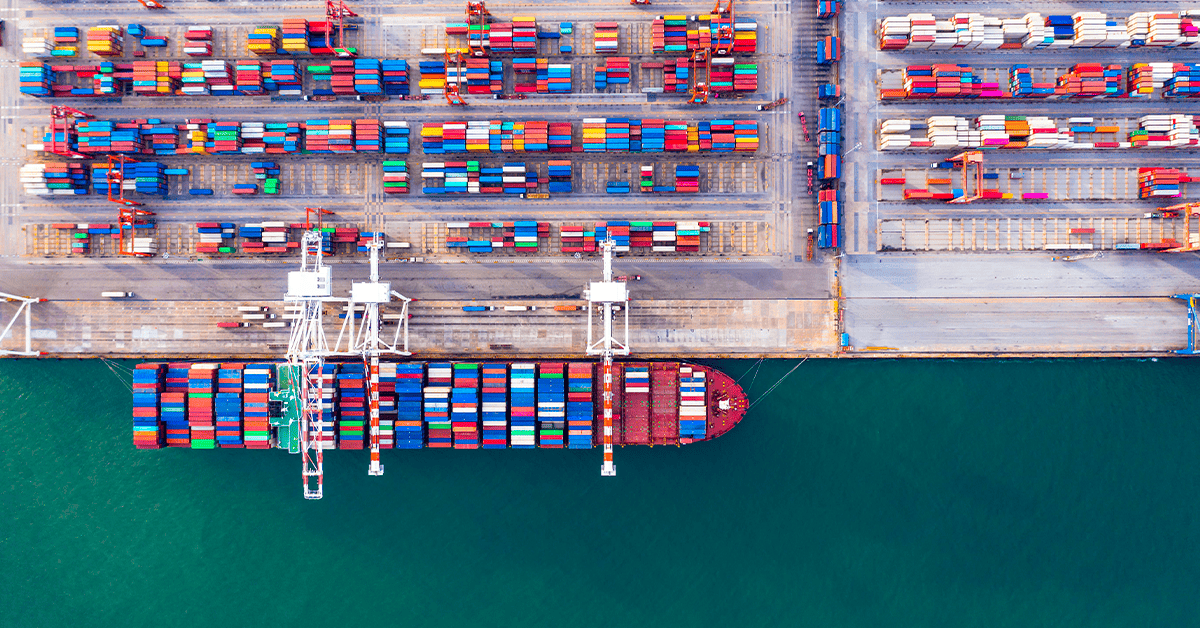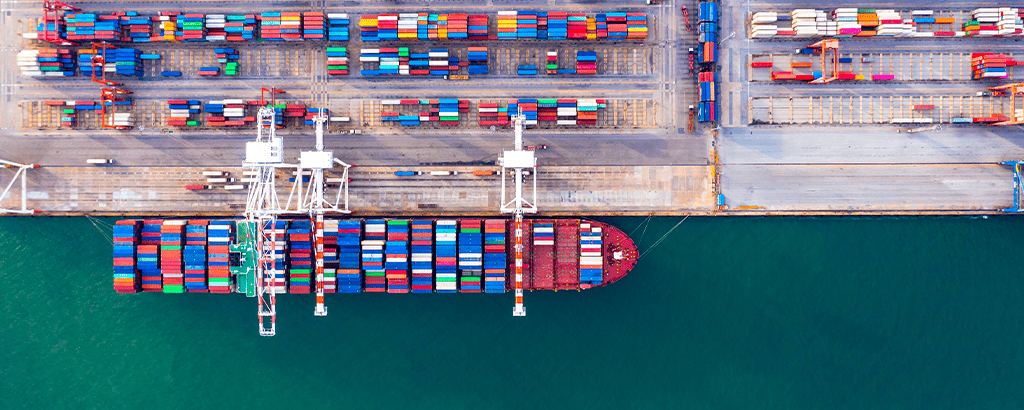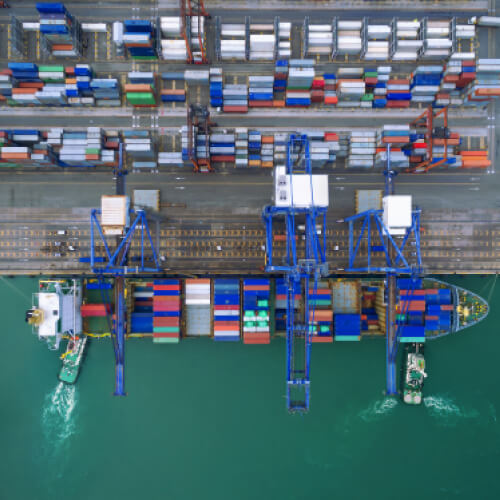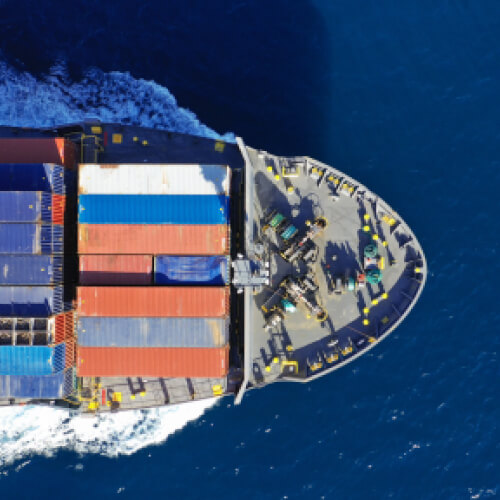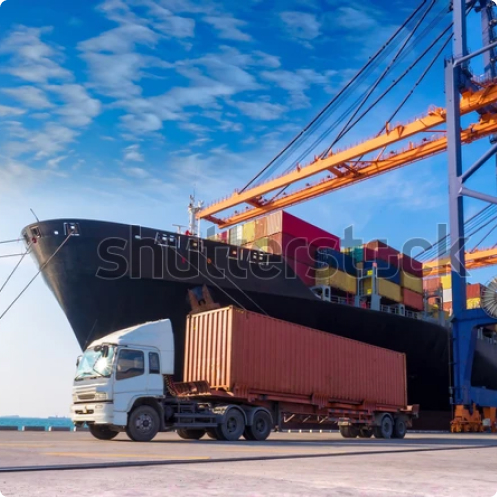Transshipment is a common yet fundamental practice in logistics, designed to ensure that goods reach their final destination efficiently. Whether it’s about optimizing costs, adapting to complex routes, or responding to operational constraints at the ports of origin or destination, transshipment represents a strategic solution.
But what exactly is transshipment? When is it used? And why has it become so relevant in global trade? Let’s find out with Savino Del Bene.
What is transshipment? definition and key features
Transshipment is a logistics operation that involves transferring goods from one transport unit to another during their journey to the final destination. This process typically occurs at a port or logistics hub, where containers are unloaded from one vessel and loaded onto another ship, truck, or train.
The meaning of transshipment should not be confused with transit or multiple shipping: transshipment implies a physical change of vessel, even if within the same transport contract. Key features of transshipment include flexibility, the ability to reach destinations not directly connected, and cost optimization.
When is transshipment used?
Transshipment is employed in many areas of international logistics, often representing either a necessary or strategically advantageous choice for supply chain operators. Here are the main situations where it is used:
- Lack of direct routes: when there are no direct sea routes between the origin and destination ports, transshipment allows the shipment to proceed via intermediate logistics hubs;
- Cost optimization: splitting the route into several legs can be more cost-effective, especially by leveraging economies of scale at major transshipment ports;
- Cargo consolidation: transshipment is often an integral part of consolidated shipping, where cargo from multiple shippers is brought together at a single hub for forwarding to common or similar destinations;
- High season and port congestion: during seasonal peaks or congestion, transshipment enables more flexible volume management, avoiding delays and overloads;
- Structural or technical limitations: some ocean vessels cannot dock at smaller ports due to depth or infrastructure limitations; in such cases, transshipment to smaller vessels is essential;
- Multimodal integration: for shipments combining different modes of transport, transshipment is crucial to ensure continuity and consistency across the supply chain.
In all these scenarios, transshipment is an effective solution to ensure continuity, reach, and control in global freight flows.
Direct Shipping vs transshipment: key differences
One of the most common questions concerns the differences between direct shipping and transshipment. Both aim to move goods from point A to point B, but they do so in very different ways.
Direct Shipping
Direct shipping means the goods are loaded onto a single transport mode that completes the journey to the final destination without stops or carrier changes. It’s a simple and linear solution, ideal when there are direct maritime connections between the origin and destination ports. The main benefits of this method are speed and lower operational complexity: minimizing intermediate handling reduces the risk of damage, loss, or delays. However, this option is not always available or cost-effective.
Transshipment
In transshipment, goods are transferred from one transport unit to another at one or more intermediate stops, which act as logistics hubs. This process makes it possible to connect locations that cannot be reached with a single leg. Transshipment is widely used in containerized maritime transport and plays a key role in global logistics chains. Although it involves more complex management, it offers greater flexibility, geographical reach, and cost efficiency, especially for large-volume shipments or complex destinations.
Direct Shipping vs transshipment: comparison table
| Aspect | Direct Shipping | Transshipment |
| Connection | Direct | Indirect (with intermediate stop) |
| Transit Time | Generally shorter | Potentially longer |
| Flexibility | Limited | High |
| Geographical Coverage | Only main routes | Also secondary ports |
| Costs | Often higher | Potentially more convenient |
| Operational Management | Simpler | More complex |
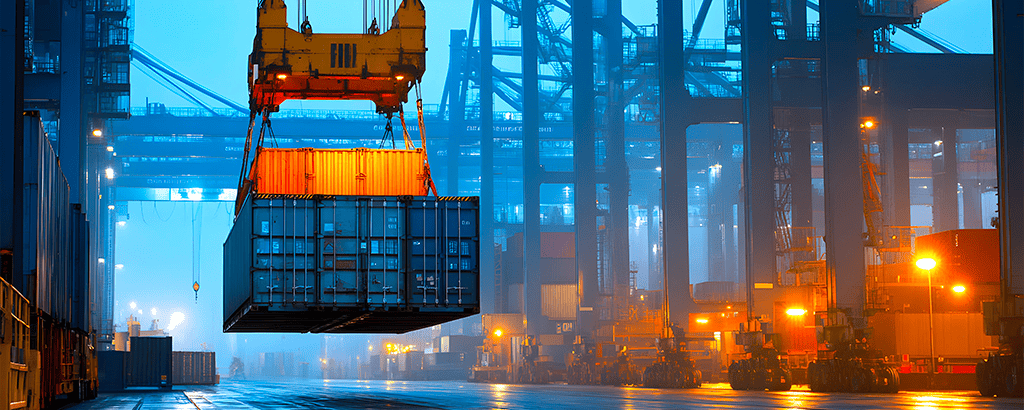
Top 5 busiest transshipment ports in the world
Transshipment is an essential component in the operations of hub ports, which serve as redistribution centers for goods headed across the globe. Some ports have become strategic nodes for container traffic, moving millions of TEUs every year. Here are the top five busiest transshipment ports in the world.
Singapore
The Port of Singapore is recognized as the largest and most advanced transshipment hub globally. Thanks to its strategic location along key maritime routes between Asia, Europe, and the Middle East, it handles a significant share of global container traffic. It is renowned for its high level of automation, operational efficiency, and fast turnaround times, making it a regional benchmark for transshipment in Southeast Asia.
Shanghai
In addition to being one of the busiest ports in the world by total volume, Shanghai plays a crucial role as a transshipment center for Eastern China. Goods from intercontinental routes are redistributed here to smaller domestic ports. The port is well-connected to China’s rail and logistics networks, enabling integrated cargo flow management.
Shenzhen
Located in Guangdong, one of the world’s most active manufacturing regions, the Port of Shenzhen is a major transshipment hub for goods produced in China. It is divided into several terminals (including Yantian, Shekou, and Chiwan) that form a highly specialized system. The port supports an extensive feeder network connecting China’s industrial zones to global markets.
Busan (Pusan)
The Port of Busan in South Korea is the country’s main maritime hub and one of the world’s leading transshipment ports. Located in northeast Asia, it effectively connects Asia with Europe and North America. It is valued for its infrastructure capacity, terminal efficiency, and quick handling times, making it a strategic choice for transpacific shipping.
Hong Kong
Although it has lost some volume to Chinese ports like Shenzhen and Guangzhou, Hong Kong remains a major transshipment hub in the region. Its commercial legacy, favorable location, and customs independence still make it a key passage point for goods moving between mainland China and the rest of the world.
Transshipment, us tariffs and the global context: what’s happening
In the current international trade landscape, transshipment has come under increasing regulatory focus—particularly in the United States. This is especially relevant when goods are routed through third countries that benefit from preferential trade agreements, raising concerns about the correct identification of origin.
In this context, logistics operators and exporters need to pay particular attention to compliance with rules of origin, and in particular to the concept of substantial transformation, which plays a key role in determining the actual country of origin of a product.
Understanding what constitutes a substantial transformation is crucial. For example, if individual ingredients from multiple countries (such as sugar, flour, dairy, and nuts) are combined and processed into cookies in another country, the resulting product is considered substantially transformed. However, simpler processes—like mixing and freezing vegetables, repackaging, or dilution—typically do not qualify as substantial transformation, and the product must retain the original countries of origin.
U.S. Customs is increasingly requiring detailed documentation to verify these transformations and ensure that goods are properly declared. Failure to comply can lead to penalties, including reclassification of origin and higher tariffs.
At the same time, international trade policies are diverging: while the U.S. tightens its enforcement, other global players—such as the European Union and ASEAN countries—are moving toward greater openness and harmonization. This evolving context reinforces the importance of transparency, accuracy, and regulatory knowledge across the supply chain.
In this evolving scenario, transshipment remains an essential tool for connecting markets and optimizing routes—but it now demands greater awareness, compliance, and regulatory alignment. Partnering with experienced providers capable of navigating regulatory complexity is therefore crucial to ensure operational continuity and shipment security.
In this regard, it is worth noting that customs authorities often carry out inspections on goods in transit at transshipment terminals. In such cases, the freight forwarder is promptly informed afterwards by the ocean carrier, ensuring constant shipment monitoring even during such inspections.
Conclusion
Whether you’re shipping to locations not directly connected or looking to optimize time and cost, transshipment is a powerful logistics tool. However, relying on expert partners is essential to ensure security, traceability, and compliance. With a global presence and tailored sea, land, and air freight services, Savino Del Bene is the ideal partner to support you at every stage of the supply chain. For more information, contact your local Savino Del Bene representative.

